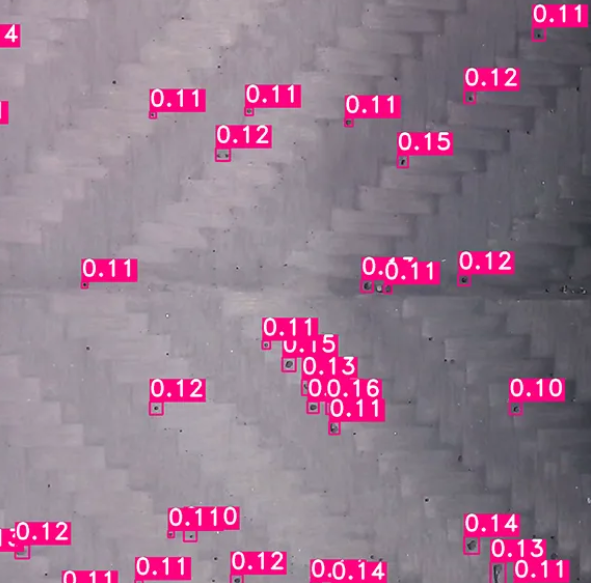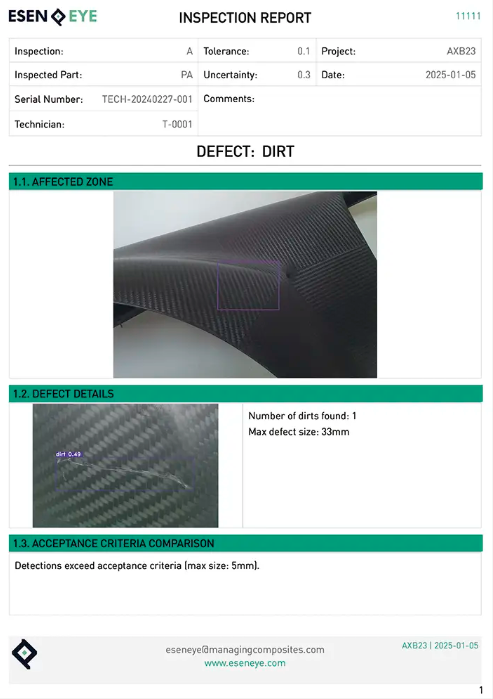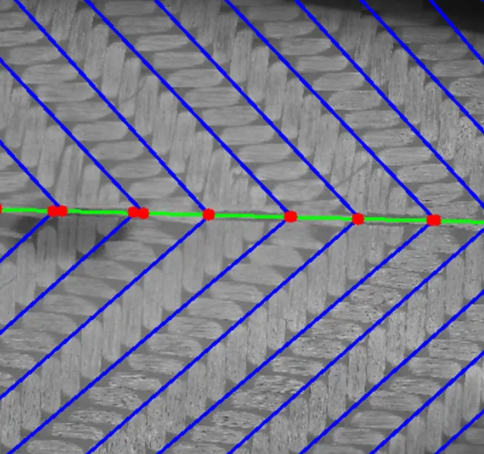Real-time computer vision technology offers advanced quality control and the assistance of a permanent supervisor
In recent years, Artificial Intelligence (AI) has moved from being a promising concept to becoming a practical tool in manufacturing environments. In composite materials production, its potential is particularly significant due to the complex, heterogeneous nature of these materials.
With a computer vision and image analysis system powered by AI, it is possible to perform the same quality control as with traditional manual or automated methods, but faster, easier, and with greater precision. In addition, it enables many other capabilities that were previously impossible.

Pinholes are among the many defects that are automatically detected, measured, and classified.
For this reason, at Managing Composites we launched ESEN·EYE as a way to continue expanding the potential of composite materials and explore solutions that would not otherwise be possible.
From Sampling to Full‑Production Inspection
In many production settings, only a sample of parts is inspected in detail, due to time and resource constraints. This approach carries an inherent risk: undetected defects in uninspected parts.

Automatic generation of part quality reports provides absolute traceability for any conforming or non-conforming part
An AI‑driven inspection system can analyze 100% of the parts without slowing down production. This not only improves quality assurance and reduces the likelihood of defective parts reaching the final assembly stage, but also provides a visual record of the condition of every part at the time of manufacture. This enables complete traceability for each manufactured component.
Objective and Repeatable Measurements
Human visual inspection is subject to variability caused by fatigue, differences in experience, or subjective interpretation of defect criteria. By contrast, computer vision systems apply the same inspection rules consistently, regardless of operator or shift. This removes subjectivity from the process and enables quantitative, traceable quality metrics.
Early Detection and Feedback Loops
One of the strengths of computer vision technology is its ability to provide real‑time feedback. When integrated into the production line, an AI analysis system can immediately flag a deviation, enabling process adjustments before further parts are affected.

In a center line matching report, every distance is precisely measured to evaluate, numerically, the accuracy of the fiber placement.
This helps reduce scrap, rework, and associated costs, while also shortening the time between defect occurrence and corrective action. This reduces the number of parts manufactured outside tolerance, avoiding delays, cost increases, and unnecessary environmental impact.
The technology developed in ESEN·EYE inspects in real time for pinholes, fiber orientation, center line matching, possible contaminations, aesthetic defects such as scratches, and much more. For more information, you can visit the ESEN·EYE website to learn more about its applications in composite part manufacturing.

